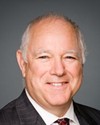Certainly. That really falls into the two categories of physical and mental injuries.
I will deal first with the physical injuries, and specifically with injuries suffered by those who have been unfortunate enough to have lost limbs.
The government has recently purchased two computed-assisted rehabilitation networks. This is a 3D artificial environment rehabilitation network to assist people to learn how to deal with the loss of their limb or limbs. There is one in Edmonton in the Glenrose facility, and there's another one here in Ottawa. Those were bought specifically to assist people as they try to figuratively and literally get back on their feet.
We have the whole system of integrated personnel support centres that Colonel Blais runs across the country. They are specifically a one-stop shopping network providing support services for the member and the family. There are medical caseworkers, and Veterans Affairs is totally linked in there. One of the key principles of the new Veterans Charter was a focus on early intervention, so having the Veterans Affairs staff in the integrated personnel centres across the country enables them to be there from the beginning to help people.
With respect to mental health--and in fairness, a significant number of people who have physical injuries will also present with mental health issues at some point as well--we have the operational trauma and stress support centres. We have seven of those across the country. There is a focus on clinical assistance as well as non-clinical health through the operational stress injury social support program, again run by Colonel Blais. As we have come to appreciate, successful treatment of mental health injuries in many cases involves both clinical and non-clinical treatment modalities coming together to provide holistic support.





